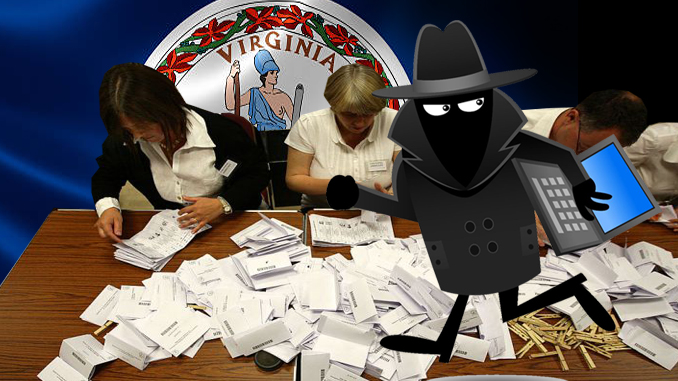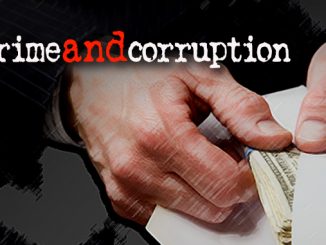
Virginia and Texas are re-evaluating their use of easily hacked machines and considering paper ballots, in large part thanks to tireless efforts of anti-vote fraud activists like Dr. Laura Presley.
By Mark Anderson
Thankfully, the days of those way-too easily hackable electronic voting machines may soon be coming to an end. For over a decade, AFP has been reporting on how easy it is to hack the computerized voting systems that have spread across the country. Now, two states are moving to ban them, citing charges of vote-stealing, frequent malfunctions, and lack of a verifiable paper trail as the reasons for terminating their programs.
In Virginia, election officials do not need to be convinced that electronic voting machines are upsetting the democratic process.
On Sept. 8, with media coverage largely limited to local and regional outlets, “The Virginia Department of Elections called for the immediate decertification of [electronic] voting equipment in Virginia, and the State Board of Elections approved the request in an effort to increase the security and integrity of Virginia’s voting systems ahead of the November [2017] election,” state election official Andrea Gaines announced in a news release.
Virginia’s decision to decertify electronic voting machines is effective immediately and “means that [electronic voting machines] may no longer be used for elections in Virginia,” Ms. Gaines emphasized. The machines have been used in 22 localities across the commonwealth.
It turns out that Virginia officials decertified several electronic voting machine models because hackers at a gathering in Las Vegas demonstrated how they could compromise them.
“I understand why the Virginia State Board of Elections made their decision,” Falls Church Director of Elections David Bjerke responded, speaking to local media outlet WTOP.com. “The security that was involved in these, the direct-recording electronic machines, hadn’t been updated since 2004. Obviously, technology has increased since then, and the ability to hack equipment in general has increased.”
In a precinct with 10,000 registered voters, Bjerke went on to say, “I think the paper-based system is good because you do have a tangible ballot that can be used for audits, for recounts. You don’t have to trust the machine . . .. Until security on the Internet feels like something the people can trust . . . paper is the future.”
Texas is also rethinking its computerized voting systems. An important lawsuit is challenging the widespread use of these machines because they do not meet requirements set by the state constitution and election code.
An enduring problem in Texas is that, according to Dr. Laura Pressley, a former Austin City Council candidate who is suing the state’s election establishment, the electronic voting machines that have been used so far cannot produce an onscreen ballot that conforms to the definition of a ballot under state law.
She told AFP on Oct. 1 that, to her delight and surprise, state Attorney General Ken Paxton filed an amicus brief in support of her suit in the Texas Supreme Court. Although the high court has not yet agreed to hear her case, it intends to conduct what’s known as a full briefing in the next 30 to 60 days, in which it will determine whether or not to hear her case.
A key point raised in her lawsuit is that state election law and even the state constitution—in the largest state in the contiguous U.S., which sends 36 people to the U.S. House of Representatives— require that ballots must be numbered sequentially to qualify for use in Texas.
“But the [voting machines] here don’t number,” she said. “Over the last 16 years [since Texas began using electronic voting machines] these machines have not met the constitutional and legal requirement of numbering.”
Another point raised in her suit is the inability of the electronic voting machines to produce a verifiable paper audit trail, she said.
The problems associated with touchscreen electronic voting machines came to a sharp head recently in Hays County, Texas. In the November 2016 presidential election, a single digital vote-recording card, or “ballot box,” containing votes cast by 1,800 people, was lost.
“It was gone for two months,” Ms. Pressley told AFP. “They found it in February. Eighteen-hundred real pieces of paper would be harder to lose.”
In all, 15 states use electronic voting machines. Besides Virginia and Texas, states that are in the process of re-evaluating their electronic voting machines include Rhode Island, Georgia, and New Jersey.
Mark Anderson is a longtime newsman now working as the roving editor for AFP. Email him at [email protected].




The very first time i voted on an electronic voting machine (which was also the very first time such machines were used here in NY) , I attempted to vote for only 1 of 6 judicial candidates. We could vote for any 3 of 6. I decided to “waste” two votes and vote for only one candidate. I really wanted one of the six to win. So, instead of voting for three, i voted for one. The machine rejected my ballot as incomplete. I attempted several times to enter it into the machine. The poll personal also tried to enter my ballot. It couldn’t be done. So, i took the ballot sheet directly to one of the sitting judges who were empanelled to hear any voting cases that arose for the day. The judge ordered the Board of Election to count my votes on the ballot sheet exactly as i had entered them. The point is, that the machine REQUIRED that i vote for 4 of the 6. It was forcing me to cast votes for candidates that i did not want to vote for. So, the judge satisfied this one voter on his one issue. But what about those who just accept the status quo ?
Apparently the machines were not programmed to accept a vote such as mine in that matter. By attempting to force me to vote for 3 of 6 candidate, i was , in effect , being forced to vote against the 1 candidate that i really wanted to win.
Here is a link to the Texas Supreme Court documents in the Pressley lawsuit: http://www.search.txcourts.gov/Case.aspx?cn=17-0052&coa=cossup
Hello Laurie, Send me an email and we can connect. [email protected]
It would be great if all voters throughout the entire
country receive their 32 Full Voting Rights.
WHAT HAPPENED TO OUR RIGHT TO HAVE OUR VOTES COUNTED ACCURATELY?
ALL Americans HAVE A RIGHT to a verifiable and transparent count in line with THREE standing Supreme Court decisions.
One of those US Supreme Court decisions, Wesberry v. Sanders (1964), stated that all other rights, even the most basic, are illusory if the right to vote is undermined.
The other two relevant US Supreme Court decisions, namely, US v Mosley (1915) and Reynolds v Sims (1964) say that our right to vote consists of two parts: a) the right to cast a ballot; b) the right to KNOW that our vote has been counted accurately.
Join the fight for transparent elections… facebook Watch The Vote!
I’ve been saying this for years! I will gladly volunteer. How do I Petition my State to go back to paper ballots?